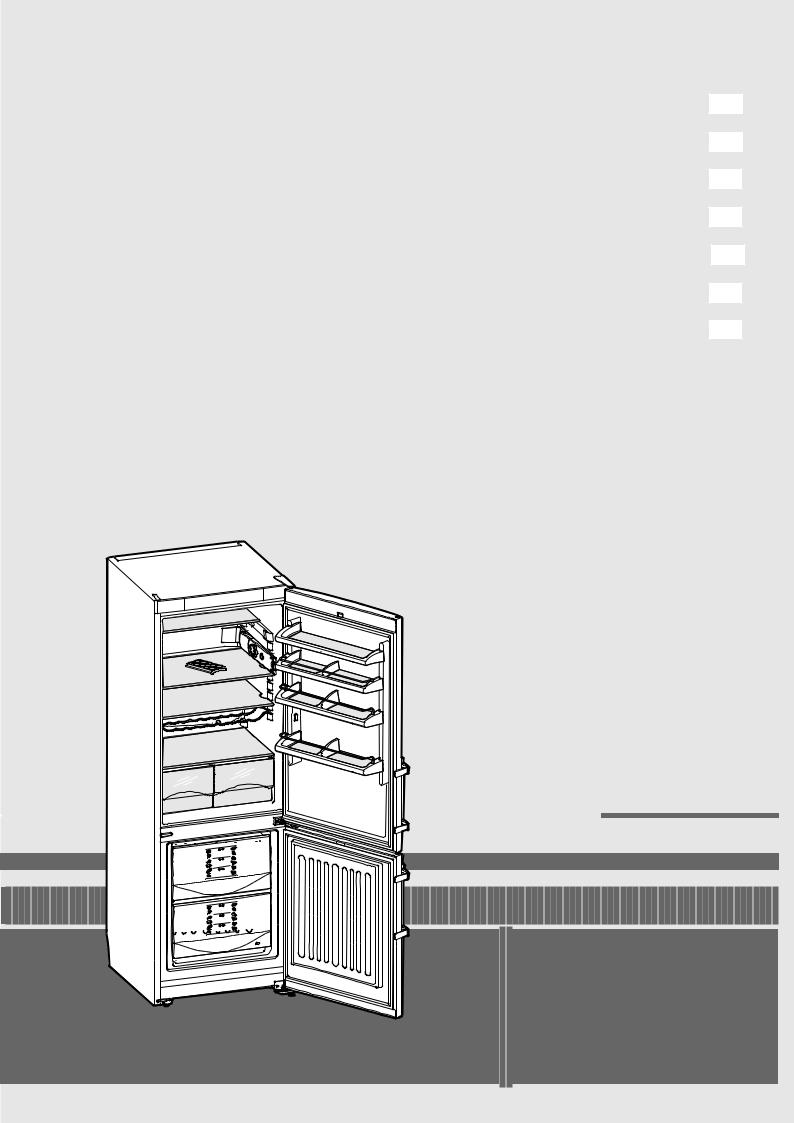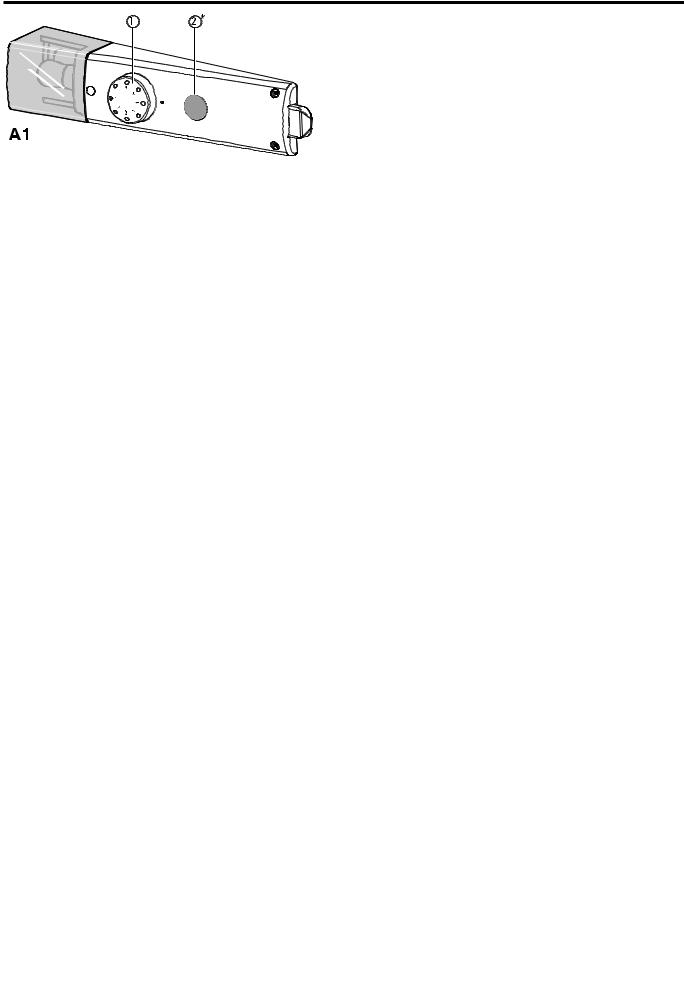Liebherr CUP 2901, CUPsl 2901 User Manual

Gebrauchsanweisung für Doppeltür-Kühl-Gefrier-Automaten
Operating instructions for double-door automatic refrigerator-freezers
Consignes d'utilisation pour réfrigérateurs double-porte
Gebruiksaanwijzing voor dubbeldeurs koelkasten
Istruzione d'uso per apparecchi frigo-congelatore a due sportelli
Instrucciones de manejo Frigoríficos de doble puerta con congelador
Kullama Kýlavuzu Masaüstü Buzdolaplarý







































 7081 878-00
7081 878-00
7081 968-00
CUP 22../27../30.... |
0507 |
CUP(esf) 2901 4510 |
|

The appliance at a glance
Controls, fig. A1: |
|
1On/off and temperature control |
|
"1" = warm |
"7" = cold |
We recommend a medium setting.
2Cool-Plus switch. Switch on at low room temperatures of 18°C or below.
Interior light
Bulb data: max. 15 W, voltage and current should agree with the details on the type plate, bulb fitting: E 14.
Replacing the bulb, fig. A1a: Switch off the appliance.
W Pull out the plug or switch off/unscrew the fuse.
W |
- |
W |
W |
- |
- |
W |
W |
By moving the bottle and can holder, you can prevent bottles from tipping over when the door is opened and closed. The holder can be removed for cleaning:
fig. A2: The holder slides and releases left or right along the door stops.
You can remove all door racks for cleaning, fig. A2: lift rack and pull forwards.
Shelves* can be adjusted in height for different height items, figs.
A4:
Lift the shelf, slide forwards and remove.
Always insert shelves with the raised edge at the back pointing upwards, otherwise food may freeze onto the rear wall. Removing drawers: Pull forward until the drawer stops
and lift out, fig. A3.
Fig. A5: If you need space for large bottles and containers, then simply push the front half of glass shelf 1back. For cleaning, the holder 2can be used to remove the half glass shelves.
Description of appliance and equipment
fig. A
Refrigerator, approx. 5°C
Egg tray*
Butter stop
On/off and temperature control, interior light
Adjustable storage shelves
Adjustable door racks*
Bottle shelf
Defrost drain
Coldest zone of the refrigerator compartment, for sensitive and perishable foodstuffs
Door rack for large bottles Adjustable bottle and can holder Vegetable, salad and fruit bins Type/Data plate
Freezer, approx. -18°C
High drawers, information system*
Ice-cube tray*
Adjustable-height feet at front, transport castors at back
|
* Depending on model and options |

Congratulations on your purchase. In choosing this appliance you have opted for all the benefits of state-of-the-art refrigeration technology, guaranteeing you top quality, a long life span and excellent reliability.
The features on your appliance have been designed to ensure maximum convenience - day in, day out. This appliance has been manufactured with recyclable materials using an environmentally friendly process, so together you and we are making an active contribution to the preservation of our environment.
To get to know all the benefits of your new appliance, please read the information contained in these operating instructions carefully.
We wish you much pleasure with your new appliance.
Keep these operating instructions in a safe place and pass them on to the next owner, where applicable.
The operating instructions apply to several models. Differences may therefore occur.
Saving energy
-Always ensure good ventilation. Do not cover ventilation openings or grille.
-Do not place appliance in areas of direct sunlight or next to a stove, heater or similar object.
-The energy consumption depends on the installation conditions, e.g. the ambient temperature.
-Keep the time the appliance is open to a minimum.
-Store food logically.
-Ensure that all food is well packed and covered for storage. This will prevent frost from forming.
-First cool warm food to room temperature before storing it.
-Defrost frozen food in the refrigerator.
-If there is a thick layer of frost in the appliance: defrost the appliance.
Accumulated dust increases the energy consumption:
-Once a year, dust the refrigerating unit together with the metal grille of the heat exchanger at the back of the appliance.
Note
- Place food inside the appliance as shown in the diagram. This allows the appliance to save energy during operation.
- Shelves, drawers and baskets are arranged for optimum energy efficiency on delivery.
Contents |
Page |
|
Operating instructions |
|
|
|
The appliance at a glance..................................... |
8 |
|
Saving energy....................................................... |
9 |
|
Example of food arrangement............................... |
9 |
|
Information system................................................ |
9 |
|
Contents............................................................... |
9 |
|
Safety regulations................................................. |
9 |
1 Safety instructions and warnings......................... |
10 |
|
|
Disposal notes.................................................... |
10 |
|
Setting up............................................................ |
10 |
|
Connecting to the mains..................................... |
10 |
2 |
Refrigerator compartment................................... |
11 |
|
Switching the appliance on and off...................... |
11 |
|
Setting the temperature....................................... |
11 |
|
Cool-Plus switch................................................. |
11 |
|
Notes on cooling................................................. |
11 |
3 |
Freezer compartment.......................................... |
11 |
|
Making ice-cubes................................................ |
11 |
|
Notes on freezing and storage............................ |
11 |
4 |
Defrosting, cleaning............................................ |
12 |
5 |
Troubleshooting.................................................. |
12 |
|
Customer service and type plate......................... |
12 |
Instructions for installation and modification |
|
|
|
Changing over door hinges................................. |
13 |
|
Insertion into row of kitchen units........................ |
13 |
Example of food arrangement fig. A
1 butter, cheese
2 cans, drinks, bottles
3 preserves, baked goods
4 dairy products
5 coldest area: delicate foods, meat and sausage products, fish, raw milk products, pre-cooked meals
6 fruit, vegetables, salad
7 frozen food, ice-cubes
Information system
Use frozen food within the recommended period.
The numbers between the symbols indicate the storage period in months for different kinds of frozen foods. Storage times given are guide times for food frozen at home. Whether or not the lower or upper value is applicable de-
pends on the food quality and how it was pro-cessed prior to freezing. The lower values always apply to food with a high fat content.
The symbols have the following signification:
pre-cooked meals |
sausages |
ice-cream |
bread |
fish |
mushrooms |
pork |
game |
vegetables |
poultry |
fruit |
beef/veal |
Safety regulations |
§ |
|||
W The device is designed exclusively for the cool- |
||||
ing foodstuffs. The applicable statutory regula- |
|
|||
tions are to be observed in the event that the device is |
||||
to be used for commercial cooling of foodstuffs. |
|
|||
The device is not suitable for the storage and cooling |
||||
of drugs, blood plasma, laboratory preparations or |
||||
similar medicine-related materials and products as |
||||
detailed in the Medical Devices Directive 2007/47/ |
||||
EC. Improper use of the device can cause the stored |
||||
products stored in it to be damaged or the items can |
||||
be spoiled. In addition, the device is not suitable for |
||||
operation in explosion-prone areas. |
|
|||
W The appliance is set to operate within specific ambi- |
||||
ent temperature limits according to its climate rating. |
||||
These temperature limits should not be exceeded. |
||||
The correct climate rating for your appliance is indi- |
||||
cated on the type plate. This is explained as follows: |
||||
Climate rating |
|
Set for ambient temperatures of |
||
|
||||
|
SN |
|
+10°C to +32°C |
|
|
N |
|
+16°C to +32°C |
|
|
ST |
|
+16°C to +38°C |
|
|
T |
|
+16°C to +43°C |
|
- The refrigerant circuit has been tested for leaks.
- The appliance complies with current safety regulations and EC directives 2006/95/EC and 2004/108/EC.
